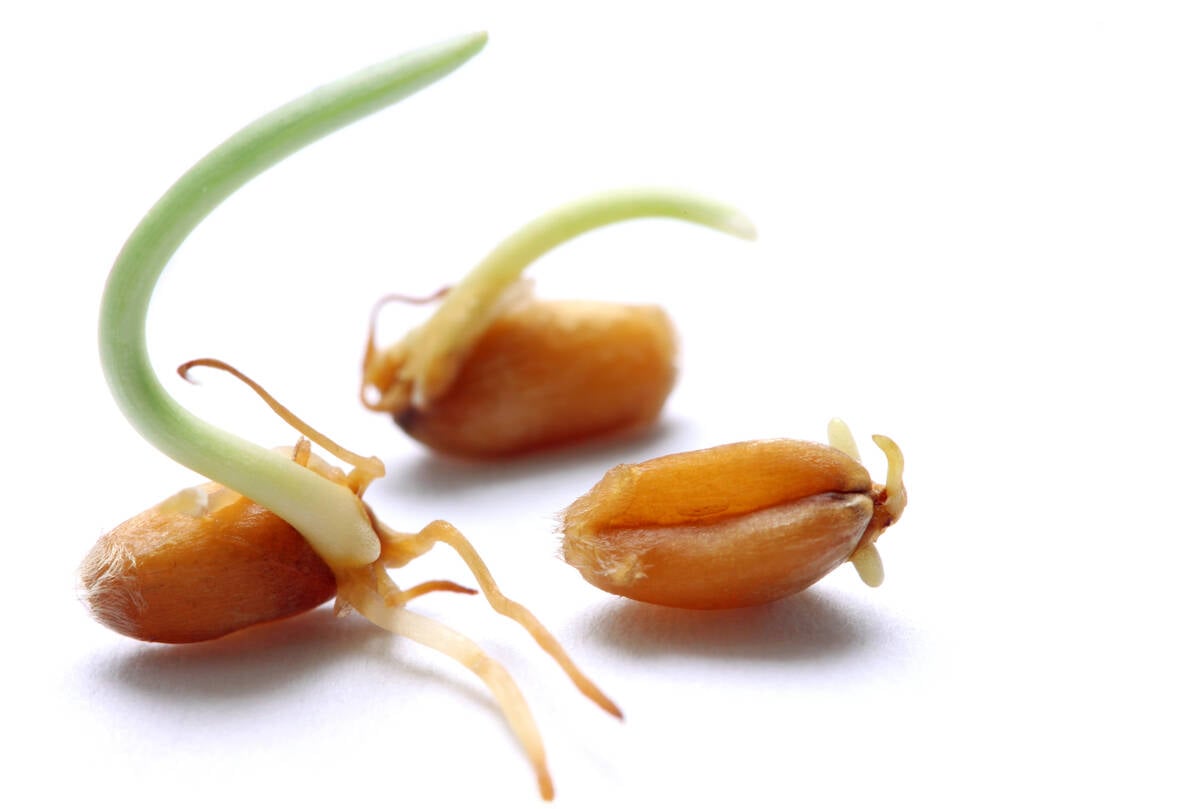Rolling out the combine might not be the best financial option this
harvest season.
The desperate demand for hundreds of thousands of bales of hay in parts
of Alberta and Saskatchewan has made it worthwhile to bale low yield
crops that in other years would be harvested as grain.
Many areas have received rain recently. That will help some crops fill,
but in other cases it will lower the grain quality, said Ted Darling,
Alberta Agriculture risk management specialist at Airdrie.
Read Also

Manitoba farmers fight sprouted wheat after rain
Rain in mid-September has led to wheat sprouting problems in some Manitoba farm fields.
“We’ve already heard of reports of second growth at the bottom. We’ve
also heard of frost damage … so the possibility of a lot of them for
grain isn’t real good, but it may be getting better for greenfeed crops.
“It is really an opportunity for everyone to come out ahead.”
For the grain producer, one of the positives of selling crop for
greenfeed is that it stops the risk of further deterioration. Taking
crop now for greenfeed makes the dangers of frost, late season hail and
a soggy harvest irrelevant.
To help producers decide whether to harvest or bale, Darling suggests
using what accountants call partial budgets.
For the grain producer, tally up and compare the net revenue from
selling the crop as grain and as greenfeed.
For the livestock owner, tally and compare the net cost of importing
hay to cutting a standing crop for feed.
Darling did sample partial budgets of these two perspectives. He used
an estimate that a 10 bushel per acre barley crop will produce one ton
of silage or one greenfeed round bale weighing 1,000 pounds. This is a
big assumption and Darling stressed that producers use their own
assessment of forage yield.
He assigned a value to the barley of $3.50 per bu., and $30 per acre
for standing crop, and assumed a hay trucking cost of $20 per bale, but
again, producers must insert their own numbers.
He also added that his example assumes the producer owns his equipment
and there is no hired labour. It also accounts for operating costs
only, not fixed costs.
In Table 1, the cost of buying, cutting, baling and transporting a
standing barley crop of 10 bu. per acre was $42.10 per bale, compared
to $95 per bale of purchased hay. This gives a clear advantage of
almost $53 per bale to buying the standing crop.
In Table 2, the net revenue from sale of the crop as greenfeed is $30
per acre.
The net revenue from selling the crop as grain is about $25 per acre
once swather, combine and truck costs are deducted.
This gives an advantage of about $5 per acre to the greenfeed option.
However, Darling noted this example did not include a value for the
straw, which is also in high demand this year.
Darling said partial budgets will identify the line where harvesting
for grain becomes the more profitable option.
“Somewhere, at 35-40 bu. or somewhere, you are going to want to combine
it and, if there is some straw, you are going to want to take that
because there is a big market..
“We don’t know where the line is. It is going to be different for
different people.”














